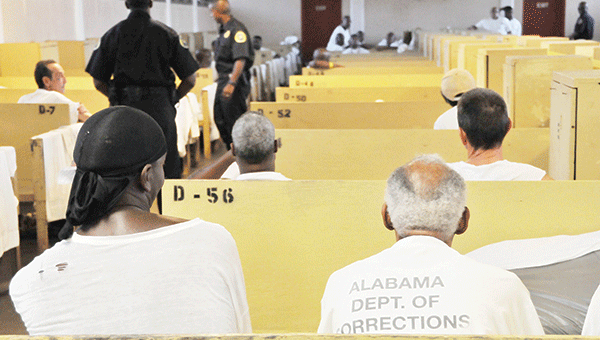Jones: Prison reform goal was keeping recidivism down
Published 7:15 pm Wednesday, October 21, 2015
Rep. Mike Jones told members of the Andalusia Lions Club that a key part of the massive prison reform bill passed this year is designed to decrease recidivism, while simultaneously ensuring the safety of the public.
In their 2015 regular session, the legislature approved a prison reform package which other states now are studying as model legislation. Jones, an Andalusia Republican who chairs the House Judiciary Committee, was a key sponsor and proponent.
Jones said that during the time spent working on the bill, prison population fluctuated from 186 percent to 194 percent of capacity, which put the state at the top of the nation.
“That very much had us in the eye of the Department of Justice,” he said. “Our approach was, ‘This is our problem and we need to fix it.’ ”
The goals were safety of the people and trying to reduce prison overcrowding, but in a way that made sense, he said.
“We thought the problem was sentencing,” he said. “And it may have been in the past. Turns out that the real problem was the violation of parole and probation.”
Jones said sponsors wanted the most dangerous people to stay in prison.
“We have to ensure our safety,” he said. “You have to look at the other end of the spectrum. Addiction and mental health are major. A large number of inmates aren’t diagnosed until they are in the system. Then they are treated by the Department of Corrections, but when they transition out, there was not a transition of mental health medications.”
Jones said that many of these people eventually went back to prison.
Communications among DOC, pardons and parole and local law enforcement will be strengthened, Jones said.
“Hopefully, there won’t be this gap as we’ve had in the past,” he said. “It’s also difficult to get a job. One of the technical violations on probation is that they are unable to pay fines.”
Driver’s licenses are often a stumbling block, Jones said.
“We are trying something new,” he said. “This has been a pet project of mine. We are now using it as a test for inmates when they are released. ALEA is responsible. When an inmate comes out, within 10 days, they can get a hardship driver’s license. They are restricted.”
The hardship license has limits, and people who served time for crimes that involved driving might not be eligible. The hardship license allows a person to drive to and from work, medical offices, school and court.
“It’s going to be plugged into a computer system, so if they are where they are supposed to be, an officer can check and make sure,” Jones said. “They have to stay within their parameters.”
Jones said if a driver with a restricted license is stopped by police, then vehicles can be automatically inspected, without cause.
“It has been proven that if you have good supervision, the recidivism drops,” he said. “One of the largest parts (of prison reform) is hiring more probation officers to reduce their loads by half.”
Jones said if former inmates can get at least a year’s supervision, there is a substantial drop in recidivism.




